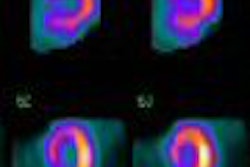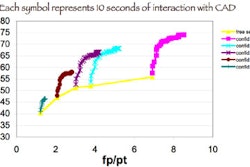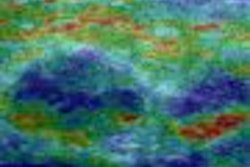As the population ages, the incidence of osteoarthritis increases as well, with nearly 75% of people over 65 years showing evidence of the disease in the tibiofemoral joint. Osteoarthritis has several unique features on knee x-ray, but how useful are they for detecting articular cartilage degeneration, asked Wisconsin-based clinicians in a recent study.
"Characteristic radiologic features of osteoarthritis (are) marginal osteophytes, joint space narrowing, subchondral sclerosis, and subchondral cysts," wrote Dr. Richard Kijowski and colleagues from the departments of radiology and statistics at the University of Wisconsin in Madison (Radiology, June 2006, Vol. 239:3, pp. 818-824).
In this retrospective study, the group correlated x-ray findings of osteoarthritis of the tibiofemoral joint with arthroscopic findings of articular cartilage degeneration within the same joint. The patient population consisted of 125 patients with osteoarthritis of the tibiofemoral joint and 25 patients without the disease. All 125 patients had chronic knee pain that lasted longer than two months with no history of recent knee trauma.
All anteroposterior radiographs were done with the patient in the upright standing position with the knee fully extended. Two musculoskeletal imaging fellows reviewed all hard copies in consensus. All 150 patients also underwent knee arthroscopy within two months after the x-ray.
The results showed that the majority of patients (90) had articular cartilage degeneration within both the medial and lateral compartments of the tibiofemoral joint. Thirty-five patients had articular cartilage degeneration in either compartment.
The sensitivity of any radiographic feature of osteoarthritis for detecting articular cartilage degeneration within the medial compartment was 69% and the specificity was 68%. More specifically, radiographic sensitivity for marginal osteophytes was 67% and the specificity was 73%. For joint space narrowing, the sensitivity was 46% and the specificity was 95%. For subchondral sclerosis, the sensitivity was 16% and the specificity was 100%. Finally, for subchondral cysts the sensitivity was 10% and the specificity was 100%.
"Our study has shown that marginal osteophytes are an important radiographic feature of osteoarthritis of the tibiofemoral joint," the authors wrote. "In our study, marginal osteophytes were the most sensitive radiographic finding for the detection of articular cartilage degeneration within the tibiofemoral joint." In addition, marginal osteophytes were the most common finding in patients with early osteoarthritis.
Conversely, joint space narrowing was less sensitive, while subchondral cysts and subchondral sclerosis were rarely seen in patients with articular cartilage degeneration.
Osteoarthritis of the tibiofemoral joint should be diagnosed on the basis of marginal osteophytes, while the other radiographic features should be reserved for assessing disease process, the authors concluded.
By Shalmali Pal
AuntMinnie.com staff writer
June 21, 2006
Related Reading
Knee joint cartilage loss linked to bone marrow lesions, June 7, 2006
3D CT measures accurately for total knee arthroplasty, May 31, 2006
Copyright © 2006 AuntMinnie.com



















